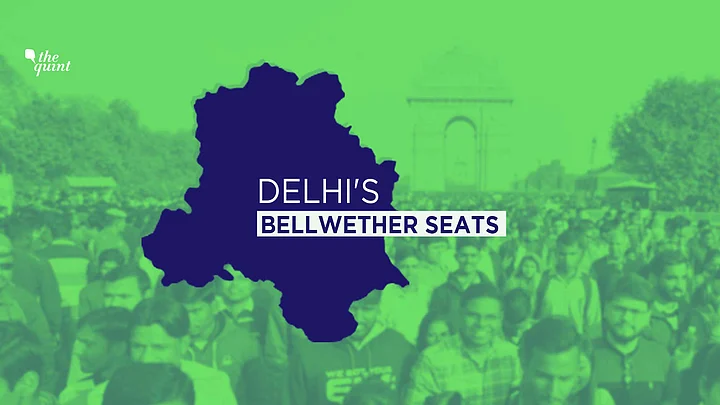Delhi is gearing up to vote in the Assembly elections on 8 February and one interesting phenomenon in any election are constituencies that can be called bellwether seats. These are seats which have invariably ended up electing the party which ends up victorious in the Assembly elections.
There are an inordinately high number of constituencies in Delhi which can be termed as bellwether seats – 19 out of 70, that is around 27 percent.
Between 1993 and 2015, all these seats voted in line with the larger verdict in the state: BJP in 1993, Congress in 1998, 2003 and 2008 and AAP in 2015.
While 1993, 1998, 2003, 2008 and 2015 were all clear verdicts in favour of one party, 2013 is a peculiar case since Delhi gave a split verdict with BJP winning 32 seats and AAP getting 28. Therefore this includes seats which elected an MLA of either BJP or AAP in 2013, while voting for the winning party in the state in all other elections.
Now, the first question is do “bellwether” seats serve any analytical purpose while studying elections?
Psephologist and founder of CVoter Yashwant Deshmukh says that “each seat is a universe of its own”. According to him, bellwether seats are a “statistical aberration but interesting from a media perspective. Each election may throw up a new set of bellwether seats”.
While keeping this caveat in mind, let’s look at what these 19 bellwether seats tell us about Delhi’s electoral landscape. The analysis only looks at elections after Delhi got a full-fledged Vidhan Sabha - that is 1993 and onwards - and not elections that took place before that.
Why Certain Constituencies Buck State Trends
These 19 seats have voted in line with the state-wide verdict every single time since 1993. If one adds to this seats which may have voted differently in just one election, it would end up including over 50 percent of the seats in Delhi.
So this indicates that electoral battles in Delhi are far less localised than most other states. This could be partly due to the fact that Delhi is smaller and much more urban than other states and therefore there is less scope for localised differences.
A better way to understand why some seats tend to vote in line with the state-wide verdict is to look at the question from the other side – why do some seats buck the state trend?
Two things could make a seat slightly immune to the larger state-wide current: A strong local leader or demographic factors. Sometimes it could be a combination of both factors – that is the leader represents a significant demographic section.
For instance, even when the Congress won the state in the 2000s, BJP did well in Jat-dominated seats like Palam, Bijwasan and Delhi Cantonment as well as Punjabi-dominated seats like Janakpuri, Shalimar Bagh, Moti Nagar and Hari Nagar.
In some of these seats BJP also had strong figures such as Jagdish Mukhi in Janakpuri, former CM Madan Lal Khurana in Moti Nagar and Harsharan Singh Balli in Hari Nagar.
Similarly in an anti-incumbency wave in 2013, individual Congress candidates managed to hold their ground such as Arvinder Singh Lovely in Gandhi Nagar, Jai Kishan in Sultanpur Majra, Chaudhary Mateen Ahmed in Seelampur and Parlad Singh Sawhney in Chandni Chowk.
There’s a demographic factor to this as well. Despite anti-incumbency in the state, Congress did well in seats with a high Muslim concentration: Okhla, Seelampur, Mustafabad, Chandni Chowk and Ballimaran.
While Jat or Punjabi Hindu concentration has helped BJP make certain seats into strongholds, the party has consistently fared poorly in many Dalit- or Muslim-dominated constituencies. For instance BJP has never won SC reserved seats like Sultanpur Majra, Mangolpuri, Deoli and Ambedkar Nagar as well as Muslim dominated seats like Matia Mahal, Seelampur and Ballimaran.
Interestingly the Matia Mahal seat in Old Delhi has never been won by the Congress either, mainly due to the popularity of local leader Shoaib Iqbal, who was with different factions of the Janata Dal and is now with AAP.
Class demographics could be another factor. For instance, BJP has done better in seats like Greater Kailash where there is a more sizeable chunk of middle class and upper middle class voters.
Therefore, many of the aforementioned 19 seats ended up voting in line with the state-wide trend due to the absence of these two factors: A skewed demography or a local leader strong enough to hold his or her ground even in a wave.
